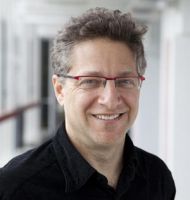PETER GALISON is the Joseph Pellegrino University Professor of the History of Science and of Physics at Harvard University and Director of the Collection of Historical Scientific Instruments. His work explores the complex interaction between the three principal subcultures of physics—experimentation, instrumentation, and theory.
In 1997, Galison was awarded a John D. and Catherine T. MacArthur Foundation Fellowship; he won a 1998 Pfizer Award (for Image and Logic); and in 1999, he received the Max Planck and Humboldt Stiftung Prize. His books include How Experiments End (1987), Image and Logic (1997), Einstein’s Clocks, Poincaré’s Maps (2003), and Objectivity (with L. Daston, 2007). With collaborators he has organized a series of books about the cross-currents between science and other domains including, Big Science (with Bruce Hevly); The Disunity of Science (with David Stump); The Architecture of Science (with Emily Thompson); Picturing Science, Producing Art (with Caroline A. Jones); Scientific Authorship (with Mario Biagioli) and Einstein for the 21st Century (with Gerald Holton and Sylvan Schweber).
Galison has a long-standing interest in exploring the intersection between film and science. He regularly teaches a course, "Filming Science," along with Arnheim lecturer on filmmaking Robb Moss. His films include: Ultimate Weapon: The H-bomb Dilemma (2000, with Pamela Hogan), on the moral-political debates over the H-bomb, which has been shown frequently on the History Channel and is widely used in courses. With Robb Moss, he directed Secrecy (2008), which premiered at Sundance, and, also with Moss, completed Containment (2015, premiered at Full Frame Film Festival), about the need to guard radioactive materials for the 10,000-year future. Galison collaborated with South African artist William Kentridge on a multi-screen installation, “The Refusal of Time” (2012) and the chamber opera, “Refuse the Hour.”
In 2016, he established the Black Hole Initiative with colleagues in astronomy, physics, mathematics, and observational astrophysics—and is now working on a film about knowledge, philosophy, and these strangest of all objects.







